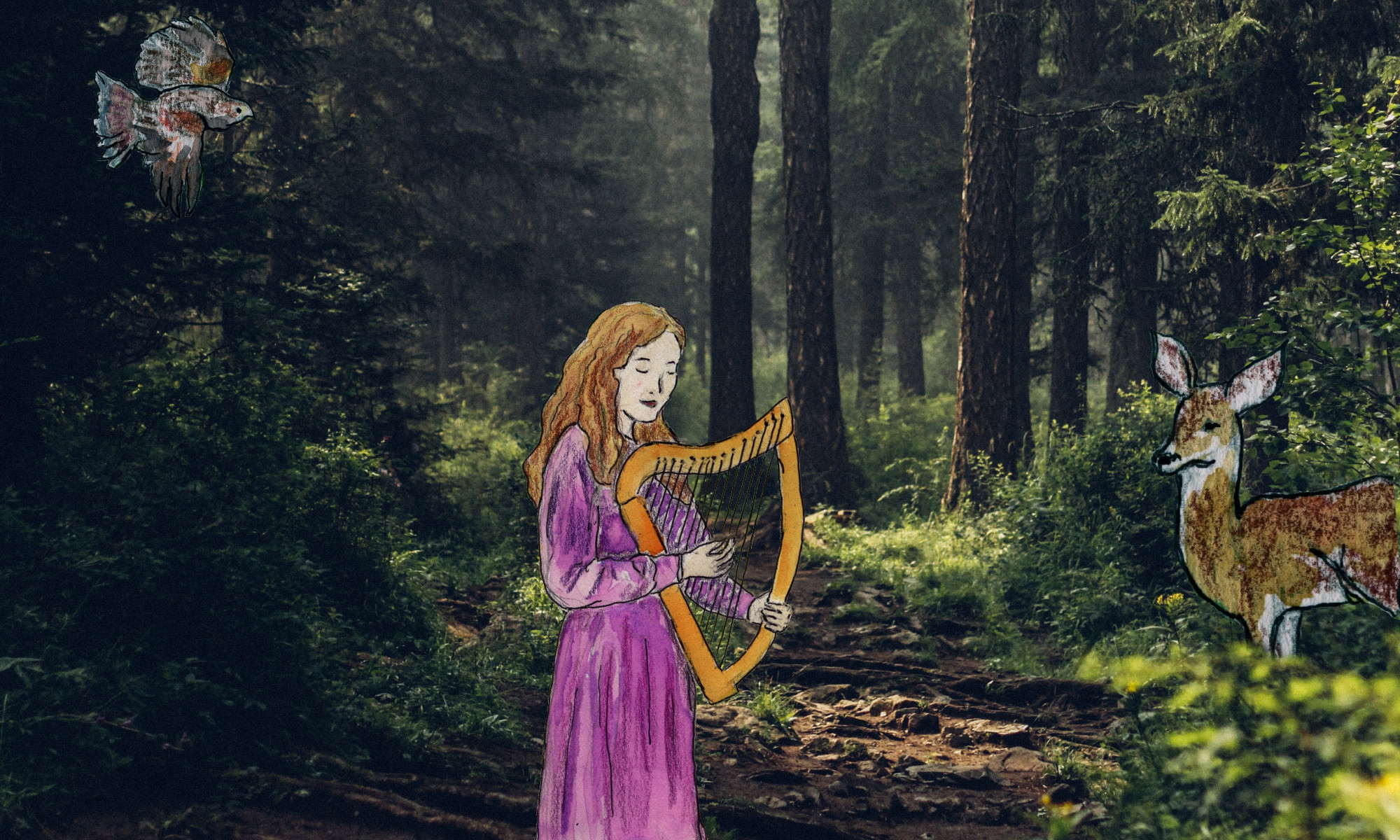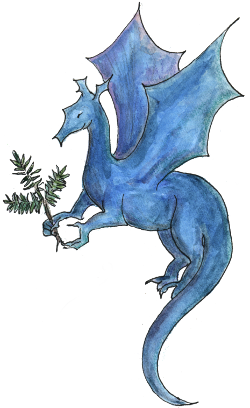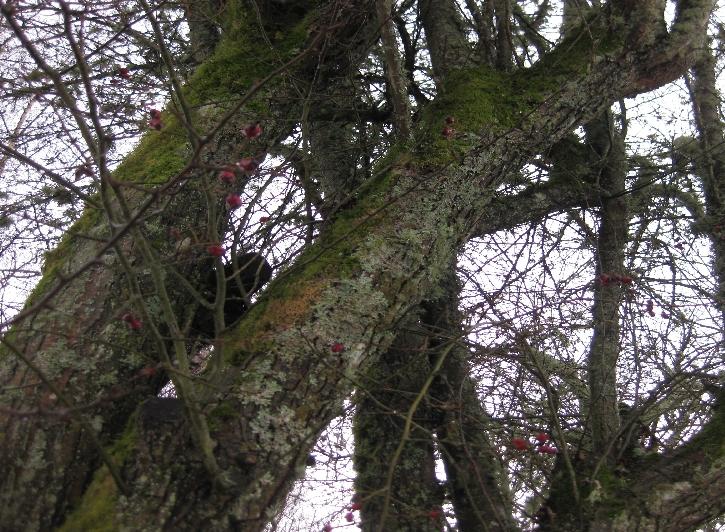I have the amazing fun and good fortune to be able to teach in a nature-immersion program for kids. These past weeks we’ve been adventuring with bird language.

Yes, it’s true. Birds have a universal language that we humans can understand. Corvids, such as ravens, jays, and crows, actually have fairly complex vocalizations, and their own trickster intelligence, making them more of a mystery. But if you listen to and observe songbirds (perching birds), you’ll find that there are basically five kinds of vocalizations, conveying certain specific meaning.
The super-cool part? You don’t have to know all the birds and all their songs. Perching birds share five basic vocal patterns. Once you come to recognize them, you’ll hear them across the landscape!
Four of these calls convey the message: “All is well right now. No danger here!” (I’ll describe all four in a later post)
If an American Robin is singing, “Cheery-up, cheery-lu”, or a Rooster is crowing, you know those birds are feeling that all is well in the world. Good morning! Isn’t this a great place? It’s mine! Aren’t I so handsome? Or even, I’m so thankful for the day! Many folks of the past – and even of the present – hear the “Dawn chorus” or “Morning Song” of the birds as the birds singing their gratitude.
Certainly I feel my heart lift and spirits soar when I hear the birds sing! How about you?
As I wrote above, four vocal patterns convey an “all is well” signature, or baseline. Birds and animals hearing those vocalizations will feel an “all is well” sense, and go about their business.
At the other end of the spectrum is, of course, the alarm call, the shrieking or honking that means, Danger, danger!
And within that spectrum of calls will be nuances. Some alarm calls can signal just annoyance – a bird flying up to get out of the way of an overeager terrier may give a disgusted shriek rather than a help! help! I’m gonna die! sscreech.
Well, a whole book has been written about the subtleties of bird language, but at its heart is a certain emotion and simplicity. The cool part is that by beginning to learn the language of the birds and to listen to what they are saying about the world around us, you’ll begin to learn just that: you’ll begin to hear exactly what is going on in the world around us!
The birds can become your eyes and ears. You can begin to see and hear in every direction, much further than you can ever do on your own.
Really.
I’ll have more to write about the incredible, super-secret world of the birds — well, super-secret to us modern-day humans anyway. To animals it’s no secret at all that the birds are broadcasting exactly what’s going on around them. Our earth-rooted ancestors knew this too. Lives depend on knowing bird language.
Right now, though, I want to entice you to go outside and listen to a bird. An American Robin is a common bird that is easy to recognize and observe.
What is that Robin doing? What is it saying (if anything). Does it sound happy or distressed? How do you feel as you listen to or watch the bird? Do you have a sense that all is right with the world as you listen to this bird? Or do you feel a clutch of distress in your heart?
If you have a bird feeder, observe and listen to the birds as they go back and forth. What is it like when it feels like all is well? What’s happening when the birds dart off all of the sudden, or begin scolding, or signal annoyance or distress or fear in other ways?
My family has seven chickens and a pair of ducks. Let me tell you, there is nothing like a poultry yard for learning bird language! In addition to our domestic birds, the yard is visited by crows and a little flock of fox sparrows (all interested in the food I provide our birds).
Here are a few examples of bird language in my poultry yard.
Bright and early (earlier everyday!) our two roosters begin to crow. We have long imagined what they are shouting about: “Wow, what a great morning! I feel so good! I have a great crow! Here’s my loud, glorious voice!” “Here’s my loud, glorious voice!”
Many times the chickens are “every bird for him/herself”, as far as feed goes, but one of our roosters, a gentle-hearted lad, will sing to his mates when I put out food, giving them the opportunity to eat before himself (which they ruthlessly do).
This morning when I put out some food, I had the honor of being sung to by our hen Turtle, a chicken who I think would really like to be a human (she likes to come into our house, snuggle in our laps, etc.). This sort of vocalization doesn’t map exactly with the five vocal calls we usually teach in the Vashon Wilderness Program (though I suppose it is a variation on a Companion Call – one bird signaling to another that all is ok and how are you?). But it definitely means that all is well in the world. Turtle does not sing to her humans (or to her flock) when she’s feeling nervous, or has a sense of scarcity about food, etc.
If it’s a warm bright morning, I can almost always count on Lord Firestar chasing Patience around the chicken yard, one rooster asserting his dominance in the pecking order over the other rooster. Definitely a sign that all is well in the yard! They aren’t going to bully each other if danger is at hand.
When I step into the chicken yard, I invariably set off a pattern of response. The fox sparrows immediately dart away, cheeping in alarm. The ducks (who don’t trust us humans at all) will begin muttering and waddling off to the side. The chickens will move away or come close, depending on the character of my presence, or if I bring food.

If I’m in hurry, they move away (even Turtle). If I’m mellow, respectful, gently curious, they’ll mostly ignore me. Turtle might come up to me, wanting attention (to be scooped up and held).
The crows offer other expressions of language and behavior. Here’s one. Often when I come out to the yard, I’ll hear a “caw, caw!” from a crow on tree top or roof. Then a few crows will come flying in. I swear they are signaling to each other that I’m likely to be giving out some great leftovers.
They seem to consider the poultry yard as their territory, and the chickens and ducks as their birds.
If I hear an explosion of crow calls, I race out of the house. I’ll almost always find crows mobbing an eagle or hawk, and our chickens and ducks hidden away in the bird coop (having alarmed to each other about the incoming danger, or listened to the crows or both).
These are just a few examples of bird expression I’ve learned and witnessed in my own yard. And in turn I’ve become far more sensitive to when I witness and hear similar behavior in the forest or field. I find myself thinking, “I think I know what’s going on!”
And my world widens in wonder and excitement.
Watch and listen to and get to know a bird in your backyard. You’ll be surprised at the secret world that even listening to just one bird can unlock!
What are your bird friends saying? Feel free to share your bird adventures here!




